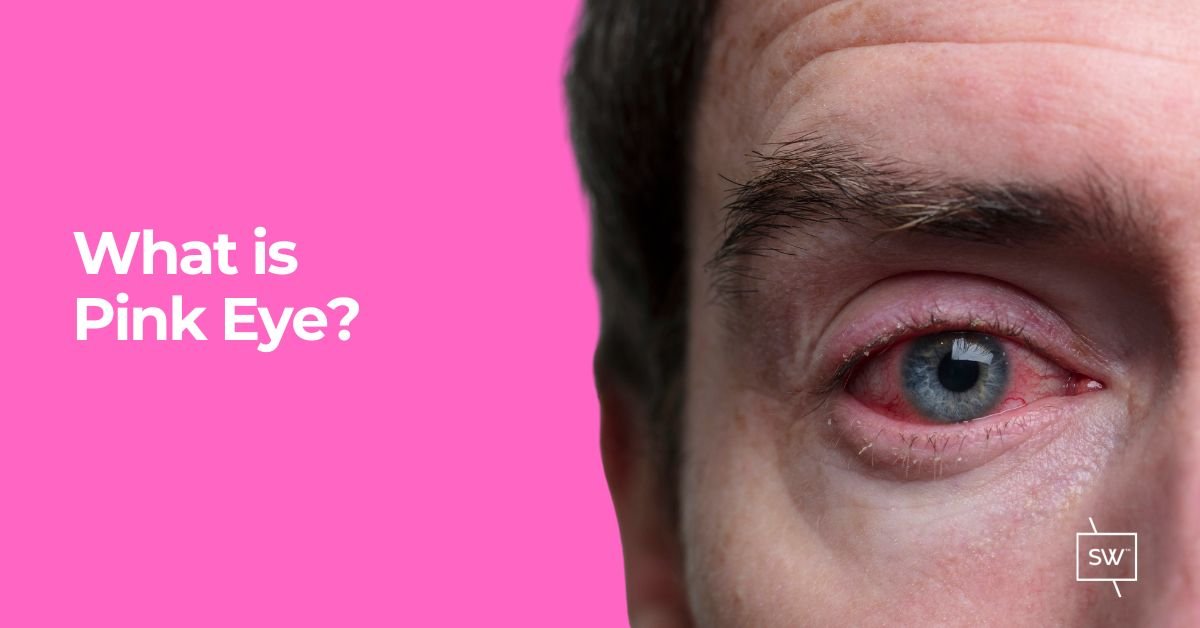What is Pink Eye?
/What is Pink Eye?
Pink eye is the common term for conjunctivitis. Conjunctivitis is a swelling and irritation of the membrane that covers the white part of the eye and eyelid lining.
There are generally 5-different types of pink eye:
#1 - Bacterial Pink Eye
Pink eye-related bacterial eye infections can cause a lot of swelling and produce sticky green discharge, resulting in eyes that are often 'glued' shut in the morning. Bacterial eye infections are more commonly seen in contact lens wearers and can result from our skin's own bacteria. Treatment of bacterial pink eye is often done with prescription antibiotics.
#2-Viral Pink Eye
Pink eye-related viral infections are by far the most common type of pink eye and are caused by the same virus that results in the common cold. Viral pink eye usually results in a watery eye with little to no discharge but may still be crusted shut in the morning. Viral pink eye is the most contagious of all pink eyes, so it hangs out in preschools, daycares and work environments. Treatment of viral pink eye is often done with over-the-counter preservative-free lubricating eye drops but sometimes may require prescription anti-inflammatory medication.
#3-Allergies Pink Eye
Pink eye-related allergies are more common after coming in contact with allergens and are often associated with other physical symptoms like a stuffy nose, itchy skin or swollen eyes. People often complain of itching and may want to rub their eyes. Treatment of allergy-related pink eye is usually done with over-the-counter preservative-free lubricating eye drops, cold compresses, prescription antihistamine or mast cell stabilizer eye drops, and oral antihistamine or anti-inflammatory medications.
#4-Dry Eye Pink Eye
Some pink eye is related to dry, inflamed eyes. Chronic dry eye syndrome, dry eye secondary to contact lens usage, or LASIK PRK-induced dry eye may result in a red glossy-looking eye. Treatment of dry eye-related pink eye is often done with warm compresses, lid hygiene, oral vitamin supplements, lifestyle modifications, and frequent usage of preservative-free lubricating eye drops.
#5-Medical Emergency Pink Eye
Pink eye can also be related to some more serious eye conditions like scleritis, uveitis, or iritis. These conditions require more urgent care and will generally not resolve independently if left untreated. Medical conditions like these should be explored with an eye doctor if your current treatment does not improve the situation or your symptoms worsen. Treatment for these medical emergencies often involves topical and oral anti-inflammatory medications. Blood work may also be required to determine the underlying cause of the inflammation.
Does Visine for Pink Eye or Polysporin for Pink Eye Work?
We don't blame you for grabbing these over-the-counter products at the pharmacy because you want to do something. But more often than not, people still end up seeing us. If you are finding relief from these products, that's great, but we still ask that you book an appointment to ensure that we're not simply covering up an underlying condition. It's also important to note that over-the-counter or prescription antibiotic drops like Polysporin can lead to significant dry eye symptoms and make contact lens wear uncomfortable for a few weeks.
Do I Need to See an Eye Doctor for Pink Eye?
Yes. Regardless of the cause of your pink eye, getting an accurate diagnosis from your optometrist is vital to ensure that the treatment matches the condition. It's also essential to find out if you are contagious. So please don't touch anyone until you visit us; we'll let you know.
Please Note: Alberta Health Care covers the cost of emergency eye care visits to your optometrist's office – there is no charge to you for pink eye (conjunctivitis) related symptoms.
If you're experiencing pink eye-related symptoms, we're happy to see you immediately. Visit our emergency eye care page for more information.




